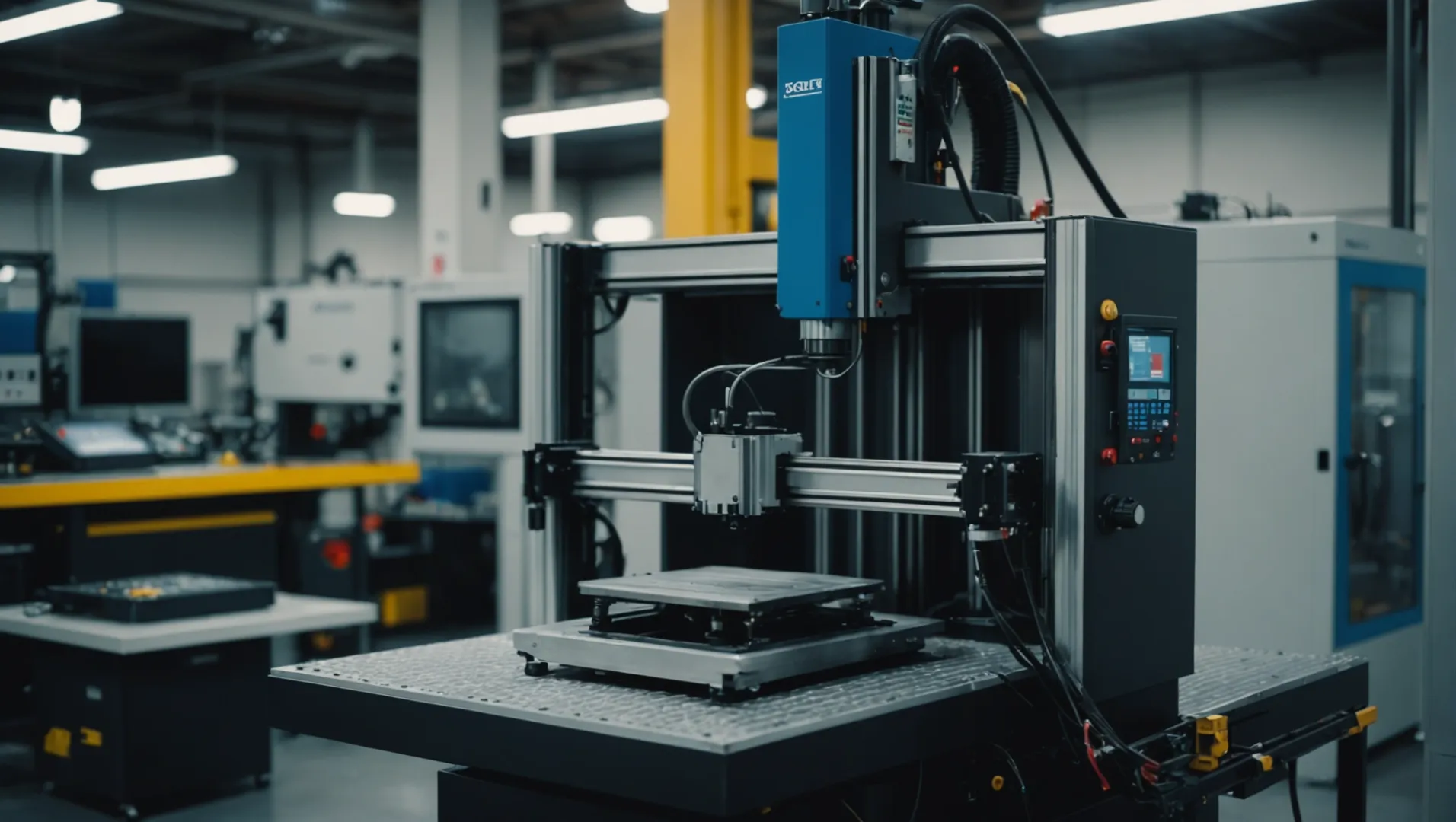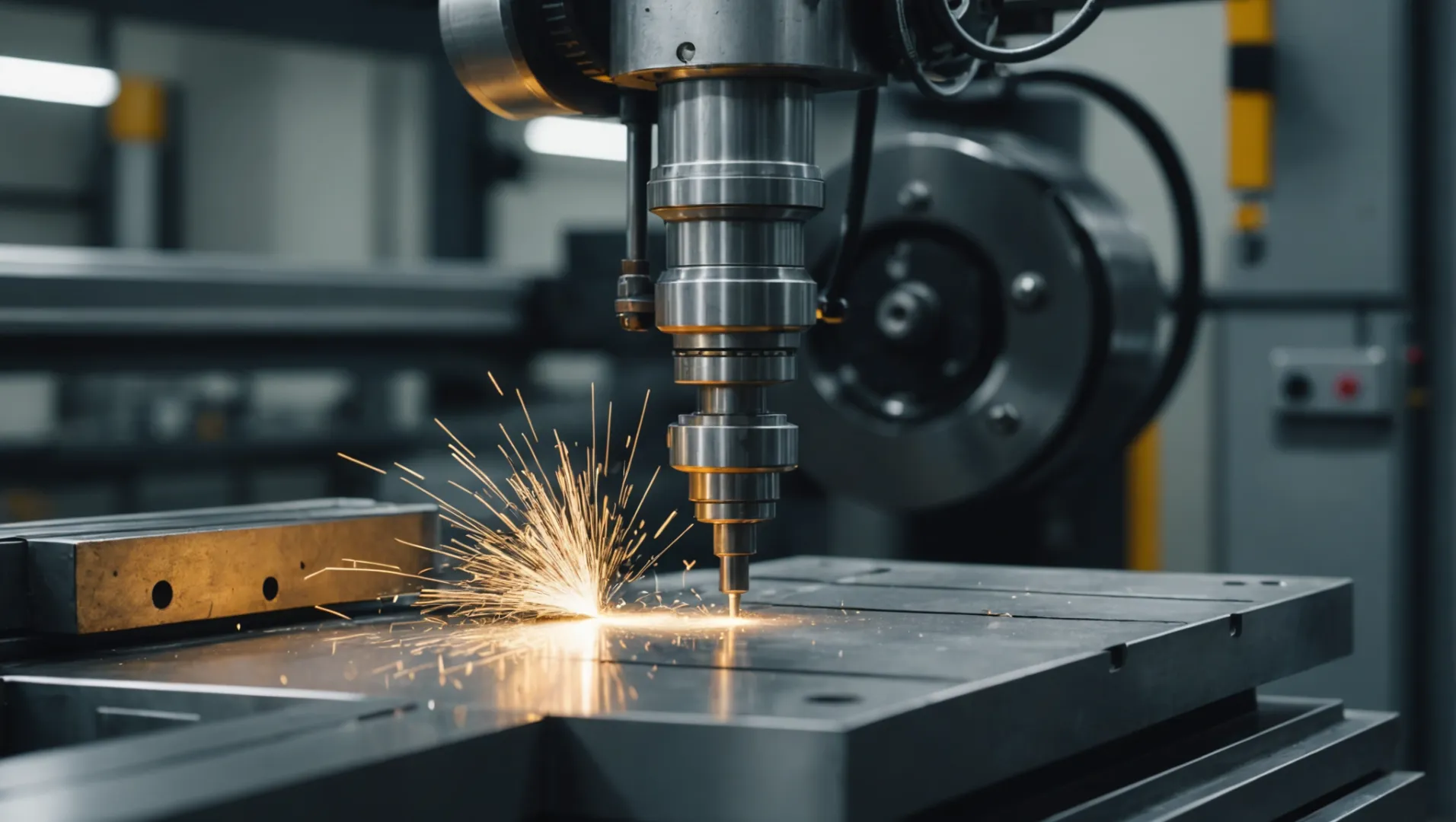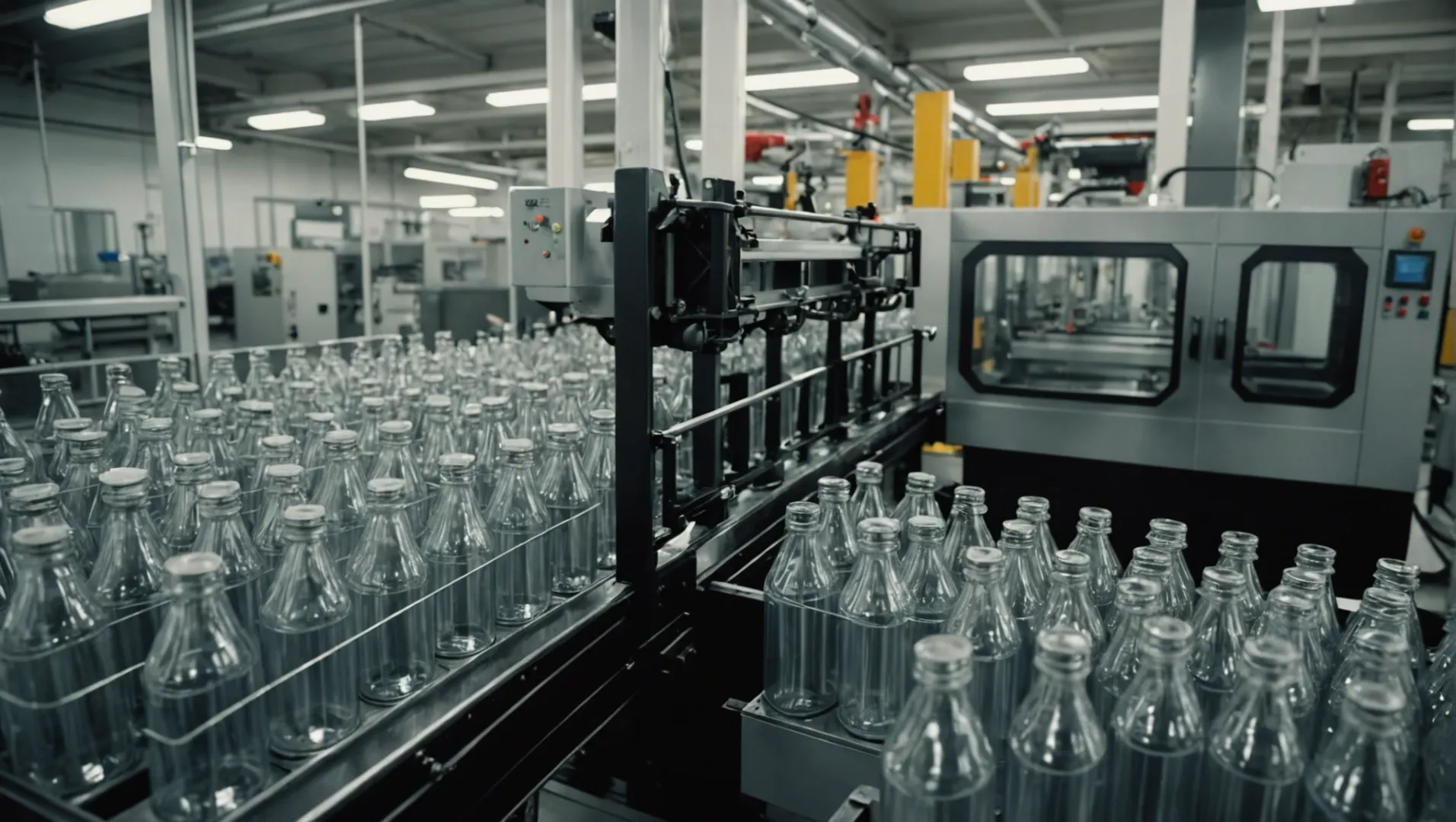
Are you feeling overwhelmed by the costs of traditional injection molding? Let’s explore some exciting alternatives that could fit your needs better!
Alternatives to injection molding include 3D printing, CNC machining, compression molding, and blow molding. Each method offers distinct advantages for low-volume production and prototyping, making them ideal choices for specific applications where injection molding may not be economical.
While injection molding has its merits, discovering these alternatives might just open up new avenues for your manufacturing endeavors. Let’s dive deeper into each method and uncover their unique benefits!
3D printing is ideal for mass production of simple shapes.False
3D printing excels in creating complex geometries, not simple mass production.
How Does 3D Printing Compare to Traditional Manufacturing Methods?
Curious about the differences between 3D printing and traditional manufacturing methods?
3D printing offers unmatched flexibility, speed, and customization compared to traditional manufacturing methods like machining or molding. It excels in creating complex geometries and is perfect for rapid prototyping and small-batch production, whereas traditional methods are typically more suitable for large-scale, high-precision parts.

Understanding 3D Printing
3D printing, also known as additive manufacturing, is revolutionizing the way we create objects. Unlike traditional methods that often require subtractive processes, 3D printing builds objects layer by layer1, allowing for incredible precision and complexity. This method is particularly advantageous for rapid prototyping and producing customized parts.
Key Advantages:
- Flexibility: Easily modify digital designs to fit changing requirements.
- Customization: Ideal for unique, personalized products such as prosthetics and dental devices.
- Material Diversity: Utilizes various materials including plastics, metals, and ceramics.
Comparing Traditional Methods
Machining:
Traditional machining involves cutting away material to achieve the desired shape. While it offers high precision, it can be wasteful and less flexible than 3D printing.
| Feature | 3D Printing | Traditional Machining |
|---|---|---|
| Precision | Moderate, improving rapidly | Very high |
| Material Waste | Minimal | Significant |
| Setup Time | Short | Long |
| Cost Efficiency | Best for small batches | Better for large-scale production |
Molding Techniques:
Techniques such as compression and blow molding are effective for mass production of simple shapes. However, they lack the ability to easily modify designs once molds are created.
Ideal Scenarios for 3D Printing
- Complex Geometries: Perfect for intricate designs that are difficult or impossible with other methods.
- Rapid Prototyping: Quickly produce prototypes to test design concepts.
- Custom Orders: Excellent for bespoke manufacturing needs.
In conclusion, while traditional manufacturing methods like machining, compression, and blow molding have their place in large-scale production, 3D printing offers unique advantages2 in flexibility and customization that make it indispensable in modern manufacturing strategies. By understanding the strengths of each approach, manufacturers can select the best method to meet their specific needs.
3D printing is ideal for large-scale production.False
3D printing is best suited for small-batch production, not large-scale.
Traditional machining produces more material waste than 3D printing.True
Machining is subtractive, resulting in significant material waste.
When Should You Choose Machining Over Other Techniques?
In the diverse world of manufacturing, selecting the right technique is crucial for efficiency and precision.
Machining is preferred when high precision, strict dimensional tolerances, and material versatility are required. It’s ideal for small batches of complex parts that demand accuracy, such as aerospace components or medical devices. Unlike methods like 3D printing or blow molding, machining excels in creating large, intricate, or uniquely surfaced pieces.

Understanding Machining
Machining involves removing material to shape a component using processes like cutting, milling, and drilling. This method is celebrated for its high precision, making it essential for producing parts with strict dimensional tolerances. It’s not just about shaping; it’s about achieving a level of detail that few other techniques can match.
Unlike 3D printing3, which builds up material, machining is subtractive. This approach is particularly beneficial for materials that require smooth finishes or intricate detailing that additive processes might struggle with.
When to Choose Machining?
-
High Precision Requirements: Machining is the go-to for projects needing stringent dimensional tolerances. Think aerospace parts or medical devices where every millimeter counts.
-
Material Versatility: Machining works with metals, plastics, and even wood, offering flexibility in material choice without compromising quality.
-
Small Batch Production: When you need a limited number of parts, especially those with complex geometry or unique surface requirements, machining is often more cost-effective than setting up molds for injection or compression molding.
Comparing Techniques
| Technique | Best For | Limitations |
|---|---|---|
| 3D Printing | Complex shapes, rapid prototyping | Limited material strength |
| Compression Molding | Large plastic products | High mold costs for small runs |
| Blow Molding | Hollow containers like bottles | Mainly for plastic, limited shape accuracy |
| Machining | High precision, various materials | Material wastage, slower for large volumes |
Practical Scenarios
Machining shines in scenarios demanding high precision and when working with complex designs that other techniques may not adequately handle. For instance, producing a small run of customized metal parts for an experimental aircraft would benefit significantly from machining’s precision and flexibility.
While techniques like compression molding4 or blow molding may offer faster production times for larger volumes or specific plastic shapes, they lack the precision and material versatility that machining provides. Additionally, blow molding5 is optimal for producing hollow forms but cannot achieve the same level of detail or material choice as machining.
In summary, when the project demands exacting standards and material flexibility in small volumes, machining stands out as the superior choice.
Machining is ideal for large volume production.False
Machining is slower and less cost-effective for large volumes.
Machining excels in achieving high precision.True
It is known for its ability to maintain strict dimensional tolerances.
What Are the Key Benefits of Compression Molding?
Compression molding, an efficient and cost-effective process, offers numerous benefits for manufacturing large, thick plastic products.
The key benefits of compression molding include lower tooling costs, suitability for large and thick parts, and material versatility. This process is ideal for applications requiring durable, high-strength components and can efficiently produce items like large containers or automotive parts.

Understanding Compression Molding
Compression molding is a manufacturing process where heated and softened plastic materials are placed into a mold cavity and shaped by applying pressure. This method is particularly beneficial for producing larger and thicker plastic items, offering a cost-effective alternative to other molding processes.
Advantages of Lower Tooling Costs
One of the significant benefits of compression molding is its relatively low tooling cost compared to other processes like injection molding. This cost efficiency stems from the simpler nature of the molds used in compression molding. For businesses looking to produce large quantities without incurring high initial expenses, this method provides an economical solution.
Ideal for Large and Thick Parts
Compression molding is especially suitable for manufacturing large and thick parts. Unlike injection molding6, where high pressure is required to fill the mold, compression molding uses a direct pressure application that allows for even material distribution in the mold cavity. This makes it ideal for creating robust products like automotive parts, large containers, and pallets.
Versatility in Material Usage
Another notable advantage of compression molding is its versatility in using various materials. It can handle thermoset plastics, which are often challenging to mold using other methods. This versatility allows manufacturers to choose the best-suited material for their specific product needs, enhancing the product’s overall quality and durability.
Applications Across Industries
Compression molding is widely used across multiple industries due to its ability to produce durable, high-quality products. In the automotive industry, for instance, it’s utilized for making parts that require high strength and heat resistance. Additionally, it’s employed in producing large storage containers and other industrial components that demand robustness and reliability.
Overall, compression molding stands out for its cost-effectiveness, ability to produce large and thick items, and versatility in material selection, making it a valuable option in various manufacturing scenarios.
Compression molding has lower tooling costs than injection molding.True
Compression molding uses simpler molds, reducing initial expenses.
Compression molding is unsuitable for large and thick parts.False
It is ideal for large, thick parts due to direct pressure application.
Is Blow Molding Suitable for Your Production Needs?
Blow molding could be your answer for creating hollow plastic products efficiently and cost-effectively.
Blow molding is ideal for producing hollow plastic items like bottles and containers efficiently. It is suitable for high-volume production with relatively low equipment costs, making it a compelling choice for the packaging industry and beyond.

Understanding Blow Molding
Blow molding is a manufacturing process specifically used to create hollow plastic products. The process involves heating a plastic parison until it becomes pliable, then placing it into a mold and using compressed air to inflate it until it takes the shape of the mold. This method is highly efficient for mass production and is predominantly used in the packaging industry7.
Advantages of Blow Molding
- High Efficiency: Blow molding can produce a large volume of products quickly, making it an excellent choice for industries that require high output.
- Cost-Effective Equipment: The initial setup costs for blow molding are relatively lower than some other manufacturing techniques, allowing businesses to scale up production economically.
- Versatile Design Capabilities: This method can produce containers of various shapes and sizes, accommodating diverse design needs.
Comparing Blow Molding with Other Methods
While blow molding excels in creating hollow structures, it’s crucial to compare it with other methods like compression molding8 and 3D printing:
| Feature | Blow Molding | Compression Molding | 3D Printing |
|---|---|---|---|
| Efficiency | High | Moderate | Low to Moderate |
| Setup Cost | Moderate | Low | High (for large scale) |
| Design Flexibility | Moderate | Limited | Very High |
| Ideal Use | Hollow objects | Large, thick items | Complex, customized items |
Each technique serves unique purposes based on production requirements, cost considerations, and material preferences.
When to Opt for Blow Molding?
Blow molding is particularly suited for industries that demand high-volume production of hollow products. For instance:
- Packaging Industry: From producing water bottles to cosmetic containers, blow molding’s efficiency and versatility make it indispensable.
- Automotive Industry: Used for manufacturing parts like fuel tanks, blow molding supports large-scale production with uniform quality.
If your production involves creating hollow plastic items and demands efficiency and cost-effectiveness, blow molding might be your best bet. Evaluate your specific needs against the capabilities of this process to make an informed decision.
For more detailed insights into whether blow molding aligns with your production needs, consider exploring industry case studies and expert analyses on manufacturing techniques.
Blow molding is ideal for high-volume production.True
Blow molding efficiently produces large quantities of hollow items.
Blow molding has higher setup costs than 3D printing.False
Blow molding generally has moderate setup costs, lower than 3D printing.
Conclusion
In summary, exploring alternatives to injection molding can greatly enhance your manufacturing process. Choose the right method based on your project’s needs for optimal efficiency and cost savings.
-
Understand the layer-by-layer building process in 3D printing.: 3D printing or additive manufacturing is a process of making three dimensional objects from a digital file. ↩
-
Explore how 3D printing surpasses traditional techniques in flexibility.: 3D printing lowers upfront manufacturing costs and enables greater automation and production of many different products with the same capital investment. Making … ↩
-
Explore how 3D printing excels in rapid prototyping and customization.: 3D printing lowers upfront manufacturing costs and enables greater automation and production of many different products with the same capital investment. Making … ↩
-
Understand when compression molding is more economical than machining.: In compression molding, the plastic material (usually preheated) is placed in an open, heated mold cavity. The mold is closed with a top force … ↩
-
Discover why blow molding suits high-efficiency container production.: 3. Cost-Effective. Extrusion blow molding uses a relatively lower level of pressure. This reduces the expenses incurred in the production … ↩
-
Explore why injection molding might be preferred in certain scenarios.: Injection molding is better suited to complex parts, whereas compression molding is better suited to simple geometries and large panels. ↩
-
Discover why blow molding is essential in packaging applications.: Rotational molding offers advantages such as design freedom, cost-effective tooling, and enhanced durability. ↩
-
Understand differences between blow and compression molding techniques.: There are four distinct blow molding processes that use heated liquid plastic to create hollow objects, like bottles or other packaging. ↩




